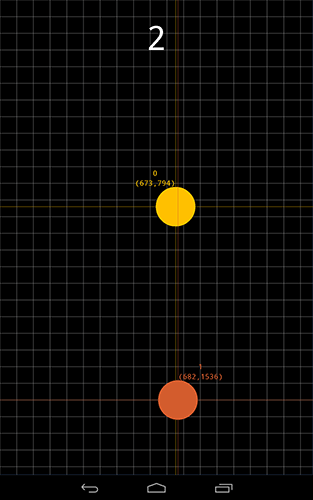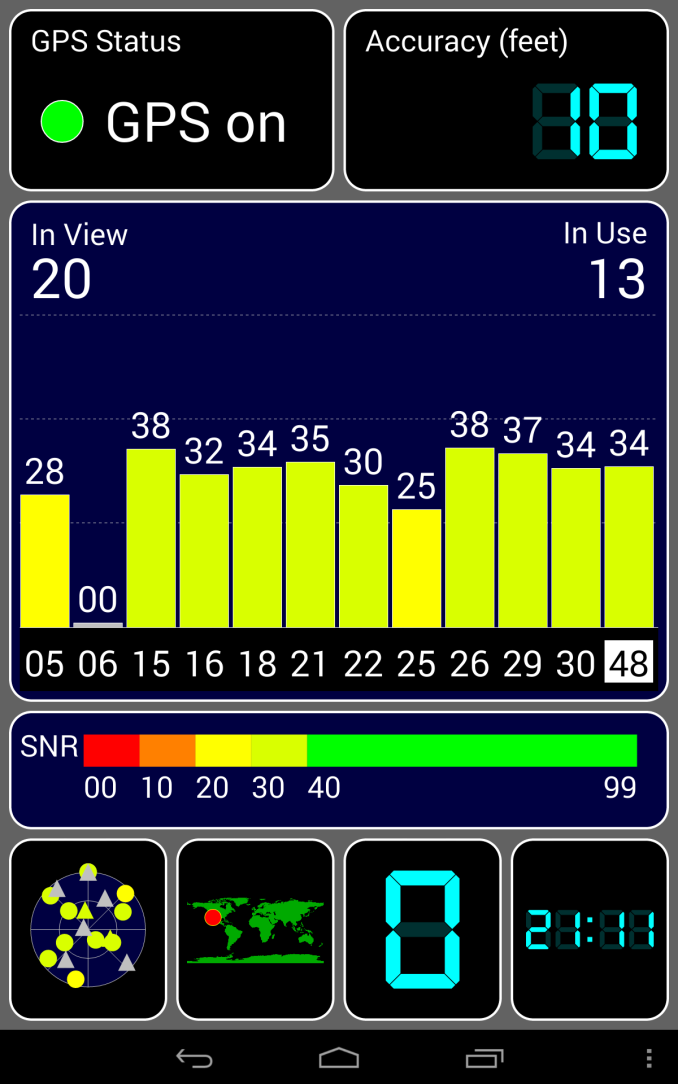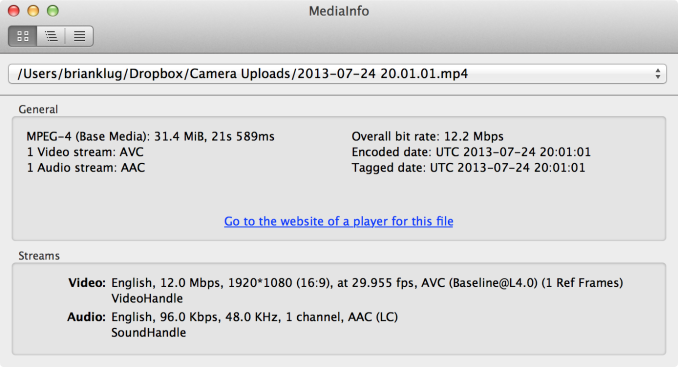The Nexus 7 (2013) Review
by Anand Lal Shimpi on August 22, 2013 6:00 PM ESTWiFi, GPS
I won't spend too much time on either of these points as Brian already did so in his initial review. WiFi duties are handled by Qualcomm's WCN3660 WiFi combo chip. The new Nexus 7 sees an update to include 5GHz 802.11n support, which is a very welcome addition. There's no 802.11ac, understandably for cost reasons. 802.11ac is probably the only thing missing from this otherwise awesome platform.

When it comes to GPS, there's good news and bad news. The good news is that Qualcomm's GNSS implementation remains the fastest we've tested as far as time to lock is concerned. The bad news is there seems to be an issue with the Nexus 7's impementation, likely in software, that results in the tablet randomly losing GPS lock. Update: It looks like this has been fixed!

Note that neither my Nexus 7 nor Brian's have exhibited the instability or consistent reboots that I've seen reports of. I had a single unexpected reboot during my GPS testing but that was it. Brian's sample has been running with over 22 days of constant uptime at this point. I also haven't seen any multitouch issues on my Nexus 7, although touch controllers are sometimes sourced from multiple vendors which could explain some of the issues others are seeing. Update: Looks like this one is fixed too!
Camera
The new Nexus 7 adds a 5MP rear facing camera, something its predecessor didn't have at all. While I rarely use my tablet for taking photos, I will admit the absence of a rear facing camera on the old Nexus 7 caught me off guard. Image quality out of the rear camera is decent. I threw together a gallery comparing the Nexus 7's rear camera to the iPad mini, MeMO Pad HD7 and Galaxy Tab 3 8.0:
In well lit situations and if you're sharing photos at lower resolutions, the Nexus 7's camera isn't bad at all. It's not the best thing in the world but in a pinch it's fine. I also threw in iPhone 5 samples as a reference in the gallery above.
Video on the Nexus 7 (2013) is 1080p30 at 12 Mbps, H.264 Baseline with 1 reference frame, and 96 kbps 48 KHz single channel AAC audio.


















202 Comments
View All Comments
tailwhip - Friday, August 23, 2013 - link
Great review, the only error is you say the screen has 1200 lines but it actually has 1080.ASEdouardD - Friday, August 23, 2013 - link
It's actually right. There are 1200 lines. Space for the virtual buttons.Impulses - Friday, August 23, 2013 - link
It's a 16:10 display, 1920x1200. I'm glad too, cause 16:9 starts to get uncomfortably narrow in portrait (even at 10", try some of the Win 8 tablets).Da W - Friday, August 23, 2013 - link
For that mather i'll take a USB 3.0 port with USB keys.YuLeven - Friday, August 23, 2013 - link
Concerning the iOS x Android comparision, it really puzzles me the fact that people always assume that iOS is 'easy and great for ordinary people' and Android is for geeks.Whether that may be true for many cases, i'd like to say that's not mine. I'm an absolutely ordinary guy. I work as a Japanese instructor and my interest in gadgets does't stretch anywhere near to custom ROM's, high-end gaming or that sort of thing.
Having owned an iPad mini and dumped it later for a Galaxy Note II, I must say that the Android ecosystem actually was by far more compelling to my work.
PDF experience was pretty much the same in both systems, but iOS's dictionaries apps pales in comparision to those on Android in terms of accuracy and usability. Apps focused on teach the language, as the one's used for flashcards and that sort of thing, followed the same experience. Browsing seemed pretty much the same as I care the most about what it's being displayed rather them scrolling like a freak to see which one is the smoothest. And last but not least, beign forced to convert my video files used in lessons with iTunes whas annoying as it can be. Other features dubbed as gimmick as how Android handle its multi-tasking actually helps me a lot.
Of course I used my tablet/phablet outside the classes and never felt cramped in both systems, though.Yet again watching videos on an Apple device was annoying for being forced to spend hours converting my files.
That's however just my opinion. I can bet that there are not that many Japanese teachers arround buying tablets, I just wanted to say that this argument of 'more optimized APPs' and 'better for ordinary people' it's not always true. Specially on the APP side. People are yet to point me an APP that is lacking on Android for my uses, but there where a few cases on iOS.
And i'd like to point too that all this smoothness thing sound just like bollocks for me. Android seems to be fast enough as I won't die for a stutter or other. Rather i'm please with it as it suits me better than iOS.
ASEdouardD - Friday, August 23, 2013 - link
Your reading an Anandtech review and know what a ROM is. Your way above the average tech user.ASEdouardD - Friday, August 23, 2013 - link
Good God, ''You're''.amdwilliam1985 - Monday, August 26, 2013 - link
I know, I felt the same thing, Android are for the geeks, iOS and touchwiz are for the norm. All my friends running Android devices are using varies Galaxy devices. My girlfriend dumped her iphone 4s and went with SGS4 because touchwiz was the easier for her to use.touchwiz > iOS > Android
lol
caleblloyd - Friday, August 23, 2013 - link
When Anand says "order of magnitude" (which he says a lot), does he mean base-2 or base-10?Aaimnr - Thursday, August 29, 2013 - link
When Anand puts some numbers in his reviews (which he does a lot), does he use base-2 or base-10?